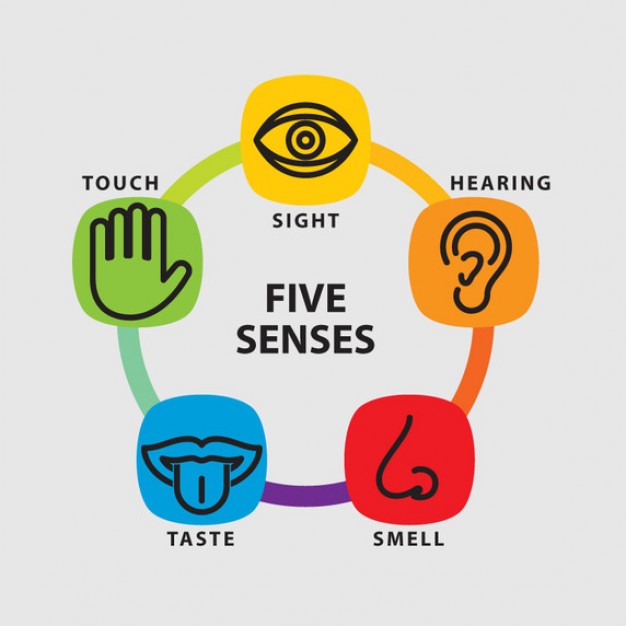Our perception of the outside world depends heavily on our five most commonly recognized senses. As far back as 322 BC mankind was aware of the existence of the senses that help interpret our surroundings. What are the five senses? They include sight, sound, touch, taste and smell. Below is a brief synopsis of the five senses and what they do for us.
What Are The Five Senses?
Sight
The organ responsible for our sight is our eyes. Our eyes are complex organs made up of lenses and specialized cells that interpret light. The optic nerve connects our eyes directly to our brains. Our sense of sight is strongly related to our perception of many things in life. For instance, if food is not visually appealing we probably will not eat it no matter how good it may taste. Our vision is also the first thing that attracts us to a mate.
Smell
The nose is the organ responsible for our sense of smell. Small receptors are nestled in the mucous membranes that line our nose cavity. Our sense of smell is closely related to our sense of taste. We first smell food before we taste it. Our sense of smell is also strongly related to our sexuality. The way a person of the opposite sex smells can either enhance the attraction or be very off-putting.
Taste
Taste receptors are found in our tongue. They are called our taste buds. We primarily respond to four basic tastes. These are sweet, salty, bitter, and sour. There is no set number of taste buds, everybody has a different amount. Usually the more taste buds someone has, the more heightened their sense of taste. Typically, women have more taste buds than men.
Sound
Of course, the ear is responsible for our hearing. The ear drum helps interpret sound waves. Our sense of sound is beneficial in many different ways. It helps us to communicate, listen and respond to stimuli, or even danger. Sometimes we just listen for pleasure, such as music. Different types of music can stimulate us is different ways and alter our mood.
Touch
Nerve endings are nestled in the skin distributed throughout the body. The parts of the body with a higher concentration of nerve endings are more sensitive, such as the fingertips. There are mainly four types of touch sensations that we recognize. These include pain, heat, cold, and contact.
There are actually many more senses located throughout the body but these are the most commonly recognized. These senses are part of the nervous system and we use them every day. Many times the absence of one sense can make the others grow stronger. For instance, someone who is blind most generally has a heightened sense of sound and smell.
All of our senses are connected to our brain in one way or another. If we are aware of them and how they work we can actually train them to become stronger. Our senses give us a heightened perception of our surroundings. As you go about your daily activities, think about the many ways your senses help you react to different situations. What are the five senses? They are our first line of defense and our ability to interpret and react to every situation.

